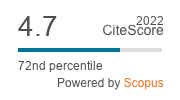A study was conducted to evaluate the effects of ochratoxin A (OTA) on broiler chicks challenged with Eimeria tenella oocysts. Two hundred day-old, unsexed Cobb broiler chicks were randomly divided into four treatment groups. Each treatment consisted of five replicates and ten chicks per replicate, making the following treatments: group I: control; group II: OTA (1 mg/kg) daily through feed; group III: coccidia (orally inoculated with 50,000 E. tenella oocysts/chick on day 21); group IV: OTA (1 mg/kg) daily through feed + coccidia (orally inoculated with 50,000 E. tenella oocysts/chick on day 21). Six birds from each group were slaughtered on the 5th, 7th, 9th and 11th day post infection. The results showed higher mortality with severe gross lesions in caecum and a greater number of faecal oocysts in groups III and IV. The gross lesions observed in group IV were characterised by distension of caecum with blood-tinged content indicative of haemorrhagic typhlitis with mucosal tissue debris. Microscopically, lymphoid organs revealed severe lymphocytolysis and depletion with cellular sparsity in OTA treated groups. The increased severity of lesions in the caecum of group IV was attributed to the additive effect of OTA and E. tenella. Caecum exhibited severe haemorrhages, the presence of numerous second generation schizonts, matured merozoites and developing oocysts. Group IV showed an increase in the severity of coccidiosis which is due to the immunosuppressive effect of OTA. Thus, it was concluded that the expression of E. tenella and its pathological effects were maximum in the presence of OTA compared to the incidence of coccidiosis alone in broiler chicks.
Effect of ochratoxin A on coccidiosis-challenged broiler chicks
M. Manafi Related information
1 Department of Animal Science, College of Agricultural Sciences, Malayer University, 65719-95863 Malayer, Iran
, K. Mohan Related information2 Department of Veterinary Pharmacology and Toxicology, Veterinary College, 560024 Bangalore, India
, M. Noor Ali Related information3 Department of Veterinary Science, Herat University, Herat, Afghanistan
World Mycotoxin Journal: 4
(2)- Pages: 177 - 181
Published Online: January 11, 2011
Abstract
Keywords: ochratoxin A, Eimeria tenella, broiler chicks, mortality, faecal oocysts
2023 Journal Impact Factor
2.0
source: Journal Impact Factor 2023™ from Clarivate™

Institutional Offers
For institutional orders, please contact [email protected].
Purchase Options
-
P. Battilani and M. Camardo Leggieri
-
F. Xu, R.C. Baker, T.B. Whitaker, H. Luo, Y. Zhao, A. Stevenson, C.J. Boesch and G. Zhang
-
A.O. Aasa, F.F. Fru, O.A. Adelusi, S.A. Oyeyinka and P.B. Njobeh
-
F. Wu
-
V. Ostry
-
V. Ostry
-
R. Bandyopadhyay, A. Ortega-Beltran, A. Akande, C. Mutegi, J. Atehnkeng, L. Kaptoge, A.L. Senghor, B.N. Adhikari and P.J. Cotty
-
A. Logrieco, A. Moretti and M. Solfrizzo
-
G. Schatzmayr and E. Streit
-
B. Grenier and I. Oswald



